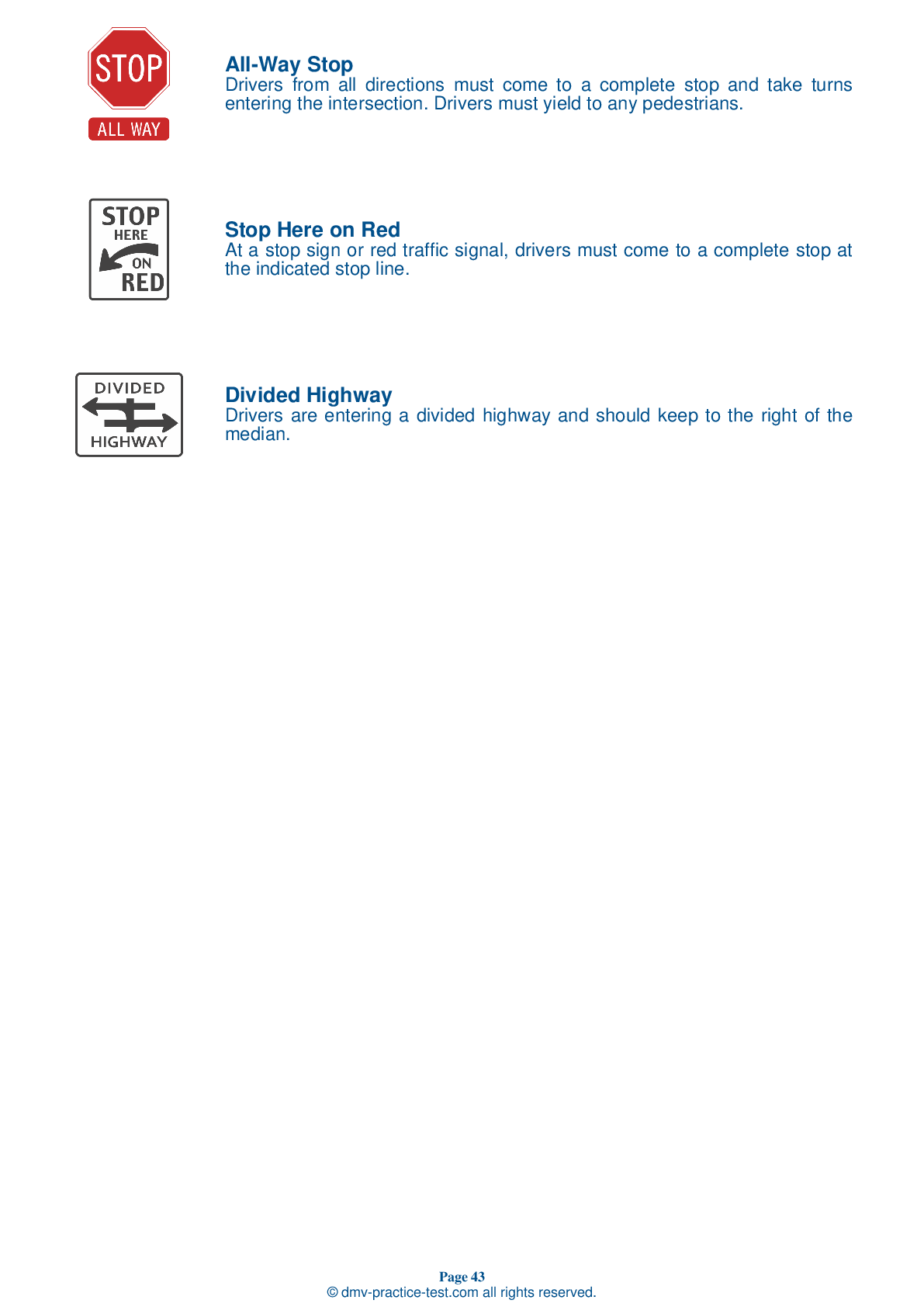FREE Connecticut DMV Practice Test #2 Page 2 of 3
This set of Connecticut DMV practise tests was just updated for January 2025. It includes questions based on the Connecticut Driver Handbook's most essential traffic signs and regulations for 2025. Use actual questions that are very similar (often identical!) to the DMV driving permit test and driver's licence exam to study for the DMV driving permit test and driver's licence exam.
Each practise test question has a hint and explanation to assist you in remembering the concepts. The written component of the official DMV test will include questions about road rules, traffic signs, and driving statutes, as well as information from the Driver Handbook.
To achieve the required passing grade, you must correctly answer 20 of the 25 questions. Take our DMV practise exam to help you prepare for your Connecticut instruction permit or driver's licence.
The DMV exam is available in several languages.
Using any form of testing help will result in an automatic fail, and the DMV may take further action against your driver's licence, so avoid it.
9 . If it feels like your tires have lost contact with the surface of the road, you should:
If it feels like your tires have lost contact with the surface of the road, you should ease your foot off the gas pedal and stay off the brakes. Do not try to stop or turn until your tires are gripping the road again.
10 . When passing, you should move back into the right lane when:
Do not pass unless you have enough space to return to the driving lane. Before you return to the driving lane, be sure you have enough room between yourself and the vehicle you have passed. When you can see both headlights of the passed vehicle in your rearview mirror, it is safe to return to the driving lane.
11 . Should you always drive more slowly than other traffic?
You must drive more slowly than usual when there is heavy traffic or bad weather. However, if you block the normal and reasonable movement of traffic by driving too slowly, you may be cited.
12 . You see pedestrians near the road. You should:
Watch for any pedestrian who may cross your path. If you see pedestrians near the road where you are driving, slow down and be prepared to stop, if necessary.
13 . As your speed increases, it is important to:
Your vehicle's stopping distance increases as your speed increases. When driving at high speeds, it is important to look well ahead of your vehicle to allow yourself space to safely react to hazardous situations.
14 . When approaching an intersection with a flashing red light, you must:
A flashing red traffic light means the same thing as a stop sign. When arriving at an intersection with a flashing red light, you must come to a full stop and proceed when it is safe to do so.
15 . You are driving on a city street and see an emergency vehicle with flashing lights behind you. What should you do?
You must yield the right-of-way to any emergency vehicle that is using its siren and lights. Drive to the right edge of the road and stop until the emergency vehicle has passed. If you are within an intersection, drive through the intersection first and then stop.
16 . This sign means:

This sign is posted on one-way streets and other roadways where a driver is not allowed to enter. A driver may see this sign if attempting to enter an expressway ramp in the wrong direction.
Need Car Insurance? No problem!
Compare the best rates in Connecticut and find a personalized policy that meets your needs.
1. Are You Currently insured ?
2. Married ?
3. Do you own your Home?
4. Do you have more than 1 car ?
5. Have you or a Family Member Honorably Served in U.S. Military ?
6. Your Name
7. Age
8. Zip code
IMPORTANT REMINDER:Auto Insurance is Mandatory to drive in Connecticut. Get covered before you hit the road to avoid any fines.
Ranked by best match



